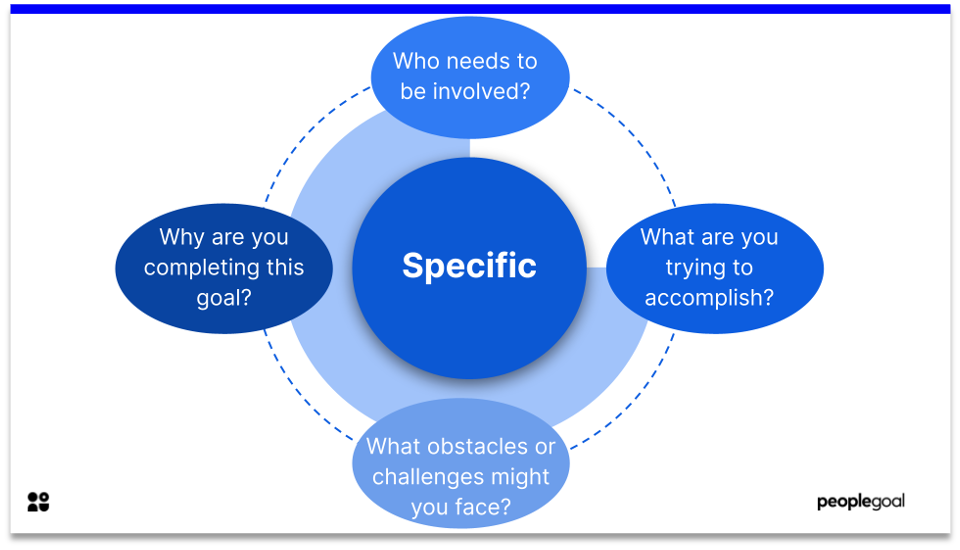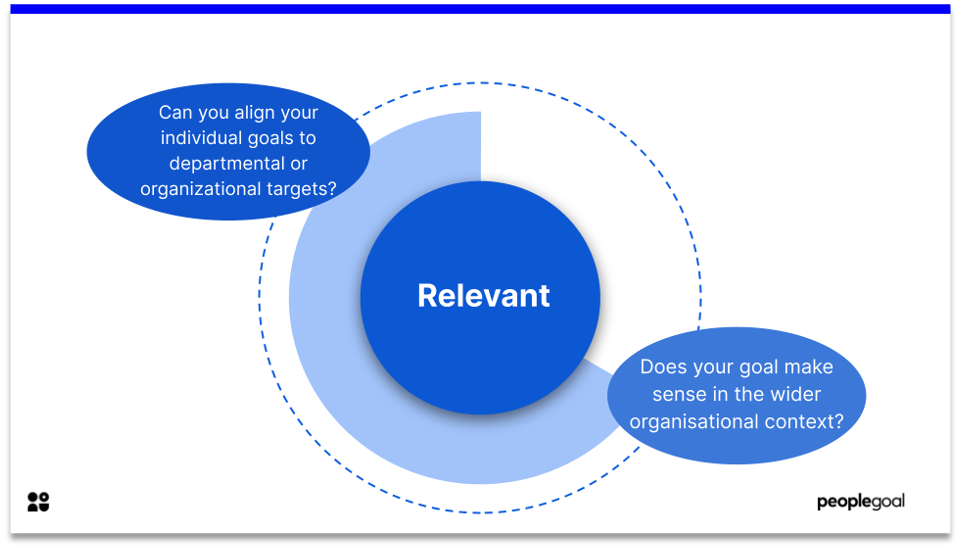SMART goals are a way to help guide goal setting. SMART goals are an acronym that stands for Specific, Measurable, Achievable, Realistic, and Timely. Therefore, a SMART goal incorporates all of these criteria to help focus your efforts and increase the chances of achieving your goal. This is imperative to be used in your company goal-setting process by providing achievable and focused goals for your employees to aim for.
Read our ultimate 2021 guide on SMART Goals here to get a more detailed explanation.
What are SMART goals?
Developing goals is critical to managing your own performance. The SMART goals methodology is a management tool that structures the setting of objectives and helps you to dig deeper into what you’ll need to achieve these objectives.
You can apply the SMART methodology across any organizational area including project management, personnel development, and employee performance management. Each letter is an attribute of your goal that you will use to expand your goal details:
What does SMART goals mean?
Think about your areas of responsibility and the work that you are accountable for. You’ll want to create one goal to cover each area. Goals should be high-level enough to cover the core area of responsibility. If you’re creating too many goals you’ll likely find that the goal scope is too low and is geared towards individual tasks, not overall results.
Each goal is going to contain the five SMART attributes:

SMART Goals: Specific

You need to be specific about what it is you want to achieve. Goals that are specific answer each of these questions:
- What are you trying to accomplish?
- What obstacles or challenges might you face?
- Why are you completing this goal?
- Who needs to be involved?
‘Specific’ action verbs:
create, coordinate, devise, develop, evaluate, maintain, manage, oversee, plan, provide, support
SMART Goals: Measurable

What metrics will you use to determine goal progress and achievement? Using metrics makes a goal more material as it provides a measure of progress and milestones along the way. If the goal is short-term then just one milestone may be enough. For longer-term projects more milestones may be necessary.
Measurement can be qualitative or quantitative:
- Qualitative methods can include surveys and customer reviews
- Quantitative methods are less subjective, for example, productivity or revenue generated
Far more metrics exist and they are sometimes difficult to determine. Each goal is individual, therefore there is no one-metric fits all formula. Managers and employees should work together to decide the best way to measure goal achievement.
SMART Goals: Achievable

The goals you set should be achievable; this doesn’t mean they should be easy.
- Good achievable goals should require some stretch: this encourages personal development.
When writing this section, you should focus on what you can do to make the goal achievable.
- You should ask yourself what may need changing or developing (i.e. skills, resources, or knowledge) in order to attain the goal.
SMART Goals: Relevant

Make sure that your goals are relevant to the current program of work. Ask yourself:
- Does your goal make sense in the wider organisational context?
- Can you align your individual goals to departmental or organizational targets?
SMART Goals: Time-Bound
Make sure to put in place clear timelines. Without given time frames, the likelihood of you achieving your goal drops substantially. Goals that are linked to a time frame give a sense of urgency and allow for a clearly defined path to success. Ask what can be achieved in a given time span. Be realistic!
Let’s take a look at an example goal that uses SMART attributes:

SMART Goals: Goal Setting Made Easy
These are good starting points for your S.M.A.R.T goals. You may wish to develop these further. Alongside your goal statement include key tactics for achievement, milestones and their respective deadlines, and key personnel to work with during the project.
Ensure that the use of SMART goals are consistent through out the company to maximise their effectiveness.
Download our free templates for SMART Goals here or check out our SMART Goals store template to see how you can automate and streamline SMART goal setting online.
Ready to 3x Your Teams' Performance?
Use the best performance management software to align goals, track progress, and boost employee engagement.






